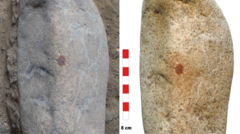The relationship between bedbugs and humanity is much older than commonly perceived. Recent research published in Biology Letters sheds light on how bedbugs, specifically the species Cimex lectularius, have been intertwined with human existence for around 245,000 years. Initially feeding on cave-dwelling bats, these resilient insects made a crucial switch to human blood, marking the beginning of their long-standing association with people.
Warren Booth, an entomology professor at Virginia Tech and the study's lead author, describes this singular relationship: "You’re not going to find a bedbug in your garden. They are completely reliant on us to spread." Their reliance stems from a period when early humans began congregating in stable habitats roughly 13,000 years ago, allowing bedbug populations to thrive.
Despite the discomfort they bring, bedbugs do not transmit diseases nor cause significant harm aside from irritating bites. As human societies transitioned from nomadic to settled lifestyles, the bedbug population surged, underlining the species' adaptation to the urban environment fostered by human habitation. The long and complex bond between these bloodsucking insects and humans provides a unique lens through which we can understand the intricate interdependencies of species in our ecosystem over thousands of years.




















